Like many other Asian countries, Vietnam uses the Lunar calendar, which is based on the cycles of the moon. As a result, the New Year 's day (Tết) in Vietnam is different from those in Western countries. For the Vietnamese, Tết is the most important festival of the year and also a spiritual and religious event. In order to celebrate Tết solemnly, Vietnamese people meticulously prepare for it several days in advance with many special rites and customs. Three preparations are performed: saying good-bye to the Kitchen God, cooking traditional foods, and cleaning the house.
The first preparation for Tết is the farewell festival for the Kitchen God. The legend of the Kitchen God tells the story of three persons, a woman and two men. The woman married her first husband, who had to leave home to find a job. After waiting for a long time, the wife thought her husband had already died, so she married the another man. Unfortunately, one day the first husband returned and went home to his wife. Meanwhile, the second husband came home from work.
The first husband hid himself in a pile of straw. Accidentally, the second husband ignited the pile. Because she loved the victim, the wife jumped into the fire. Then the second husband also leaped in to rescue her. All three died. Their spirits were combined into one, called the Kitchen God. The King of Heaven gave this God a home in the kitchen. His task is to report to the King of Heaven everything that happened during the passing year in every family.
December 23rd is the day on which the Kitchen God reports to the King. On this day, every family buys a carp for the Kitchen God to ride to heaven. The carp is blessed on the altar and is then released in a river to wish the God farewell. After a week, the Kitchen God returns to earth and the New Year begins. To the Vietnamese, the kitchen is so important that a God is assigned to preside over it. To know if a family is rich or poor, just take a look at their meals. To find out if a family is happy and harmonious, just listen to its members' conversations during the meals.
Another preparation for Tết is the cooking of Sticky Square Rice Cake (Bánh Chưng). This cake is made of glutinous rice, pork meat, and green bean paste wrapped in a square of three or four layers of banana leaves. The leaves give the rice a green color after boiling for about 14 hours. The pork meat filling must be lean. Rice cake should be boiled using wood or straw.
Bánh Chưng measures about 8 x 8 inches with a depth of about three inches. To get an exact square, the chefs use a wooden box that serves as a mold. The green of the banana leaves represents the sky, and the cake inside, the earth. As the legend goes, Bánh Chưng came into being under King Hùng, the national founder 4,000 years ago. Prince Lang Lieu, one of the sons of King Hùng, made the square Bánh Chưng as symbolic of the earth and offered them to his Father on the occasion of Spring, and ever since it has been popular during the Tết celebration. The process of making Bánh Chưng is so complicated that it requires the participation of all family members, who gather in the kitchen for 14 hours to cook and chat about aspects of their lives.
 |
| Northern Vietnam. "Bánh Chưng" |
 |
| Southern Vietnam. "Bánh Tét" |
The most superstitious preparation for Tết is cleaning the house. Traditionally, three generations lived together in the same house. Family unity is a special feature in Vietnamese culture. When members of the family have to work far away during the year, they must return to their principal home on New Year's Eve. It is very unfortunate for those who cannot come back home at this time. How exciting for the all members of a family to meet together after one year away!
Therefore, any damage around the house should be fixed and the whole house from inside to ouside should be cleaned and decorated in every corner. Due to superstition, no house can be cleaned during the three days of Tết because it is believed that sweeping the trash out the door means that prosperity and luck may be swept out, too. The true meaning of keeping the house clean during Tết is to maintain family unity, strength, and prosperity, and, symbolically, no family member can be swept out of his or her principal residence.
In conclusion, many social and governmental activities in Vietnam nowadays follow the European calendar. But the Vietnamese traditional customs of the Kitchen God, the special foods, and house cleaning for Tết have not been changed. The young Vietnamese generation has been taught that celebrating the tradition of Tết means celebrating family unity and social renewal.
 |
| Northern Vietnam. "Hoa đào" |
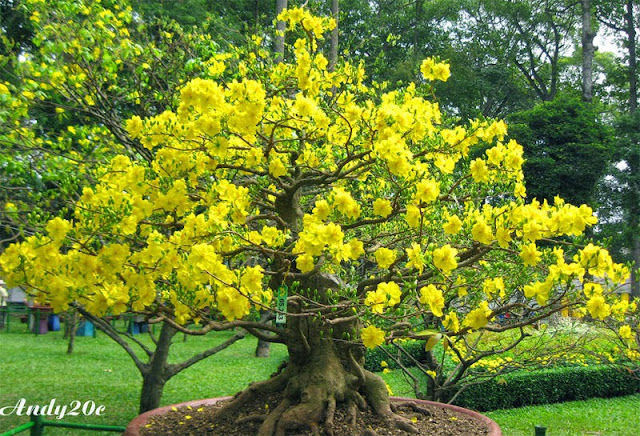 |
| Southern Vietnam. "Hoa Mai" |
 |
| Home should have "Mâm ngũ quả" Happy New Year 2015 |

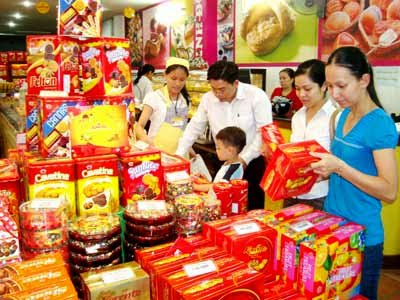


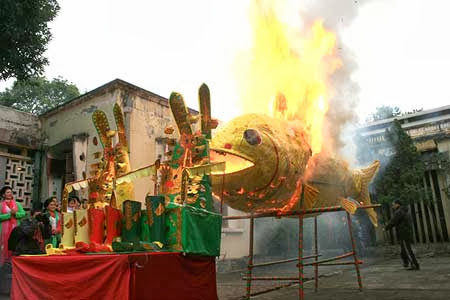
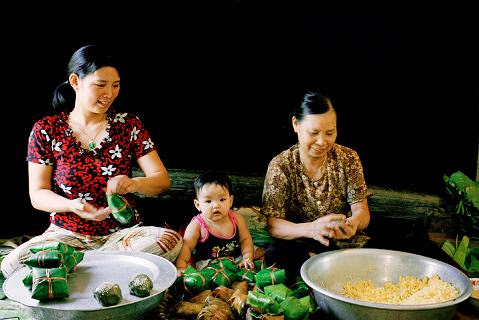
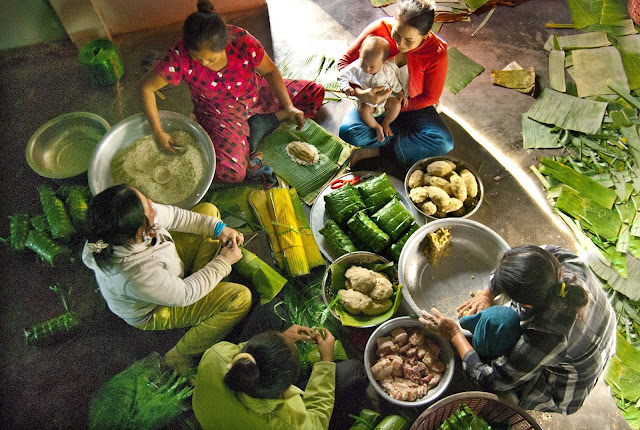

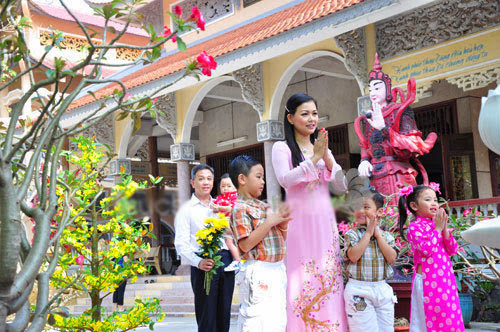




.jpg)

.jpg)